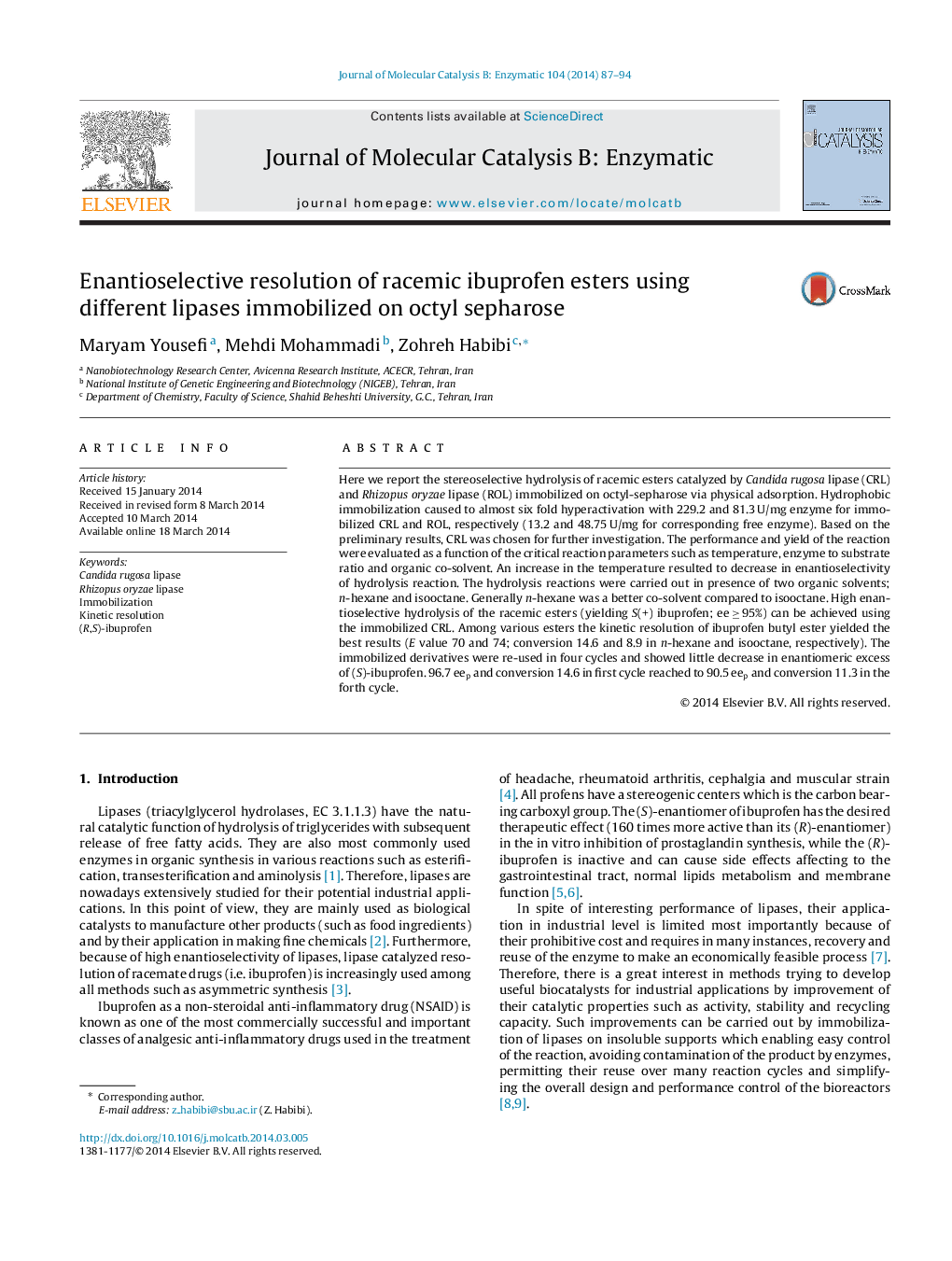| Article ID | Journal | Published Year | Pages | File Type |
|---|---|---|---|---|
| 69640 | Journal of Molecular Catalysis B: Enzymatic | 2014 | 8 Pages |
•Candida rugosa lipase (CRL) and Rhizopus oryzae lipase (ROL) were immobilized on octyl-sepharose.•The immobilized preparations catalyzed hydrolysis of racemic ibuprofen esters.•Hydrolysis of racemic ibuprofen esters by CRL resulted in higher enantioselectivities than ROL (ee > 95%).
Here we report the stereoselective hydrolysis of racemic esters catalyzed by Candida rugosa lipase (CRL) and Rhizopus oryzae lipase (ROL) immobilized on octyl-sepharose via physical adsorption. Hydrophobic immobilization caused to almost six fold hyperactivation with 229.2 and 81.3 U/mg enzyme for immobilized CRL and ROL, respectively (13.2 and 48.75 U/mg for corresponding free enzyme). Based on the preliminary results, CRL was chosen for further investigation. The performance and yield of the reaction were evaluated as a function of the critical reaction parameters such as temperature, enzyme to substrate ratio and organic co-solvent. An increase in the temperature resulted to decrease in enantioselectivity of hydrolysis reaction. The hydrolysis reactions were carried out in presence of two organic solvents; n-hexane and isooctane. Generally n-hexane was a better co-solvent compared to isooctane. High enantioselective hydrolysis of the racemic esters (yielding S(+) ibuprofen; ee ≥ 95%) can be achieved using the immobilized CRL. Among various esters the kinetic resolution of ibuprofen butyl ester yielded the best results (E value 70 and 74; conversion 14.6 and 8.9 in n-hexane and isooctane, respectively). The immobilized derivatives were re-used in four cycles and showed little decrease in enantiomeric excess of (S)-ibuprofen. 96.7 eep and conversion 14.6 in first cycle reached to 90.5 eep and conversion 11.3 in the forth cycle.
Graphical abstractFigure optionsDownload full-size imageDownload as PowerPoint slide
